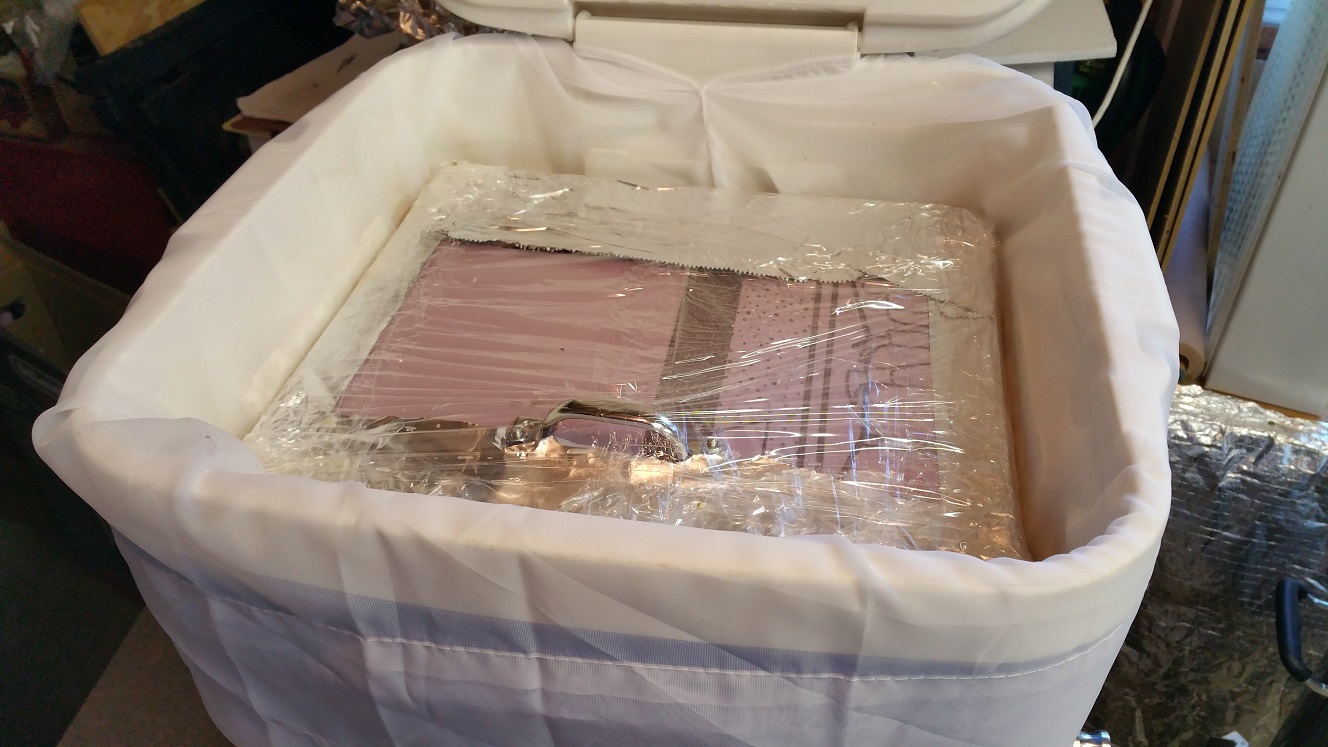Would you mind sharing the recipe with us?
Not at all. It was a standard recipe from somewhere I altered to use Maris Otter instead of 2-row.:
This was a BIAB process.
Grain bill
9.5# Maris Otter
.5# Munich
.75# Crystal 40L
.25# Crystal 120L
Mash Temp 153.7 (recorded; 153-154)
pH at 15 minutes after dough-in 5.36
Water was 1 gallon of tap (fairly hard and alkaline), 6.25 gal RO, total 7.25 gal
5gr CACL2, 5gr MgSO4, 4ml Lactic Acid to strike.
Hops (Name, amount, time, Alpha/Beta,)
Horizon, .50 oz, 60 min, 11.5/6.6
Amarillo, .25 oz, 10 min, 7.0/5.6
Centennial .25 oz, 10 min, 9.3/3.8
Amarillo, .25 oz, 0 min, 7.0/5.6
Centennial .25 oz, 0 min, 9.3/3.8
Whirlfloc at 15 minutes
WLP001 Starter (1/8 tsp nutrient, oxygenated 30 seconds). Pitched active starter directly into wort, no decanting.
Ferment at 67 degrees, raise to 71 for 48 hours when krausen falls, then back to 67 for the remainder of the 2 weeks in the primary. At 2 weeks, keg.
OG 1.058, FG 1.015.
********************
I do starters a bit differently than most. I add a little yeast nutrient to them, as well as oxygenate the starter wort. I also try to time it so that I'm pitching at about 14 hours into the starter so that it's active at the time of pitching. I'll drop the wort temp to about 70 or so, and try to have the starter at close to the same temp. These are approximate; more than once my brew day timing has coincided with the time I wanted to pitch, so anywhere from about 14 to 18 hours is typical.
I pitch the entire 1-liter starter into the wort. I don't crash in a refrigerator, I don't decant. Then I'll set the fermenter in the ferm chamber and let it take the temp down to 67. The effect on OG is to drop it about a point.
********************
I hate the use of 1/2 ounce of each of three different hops, but it is what it is.



